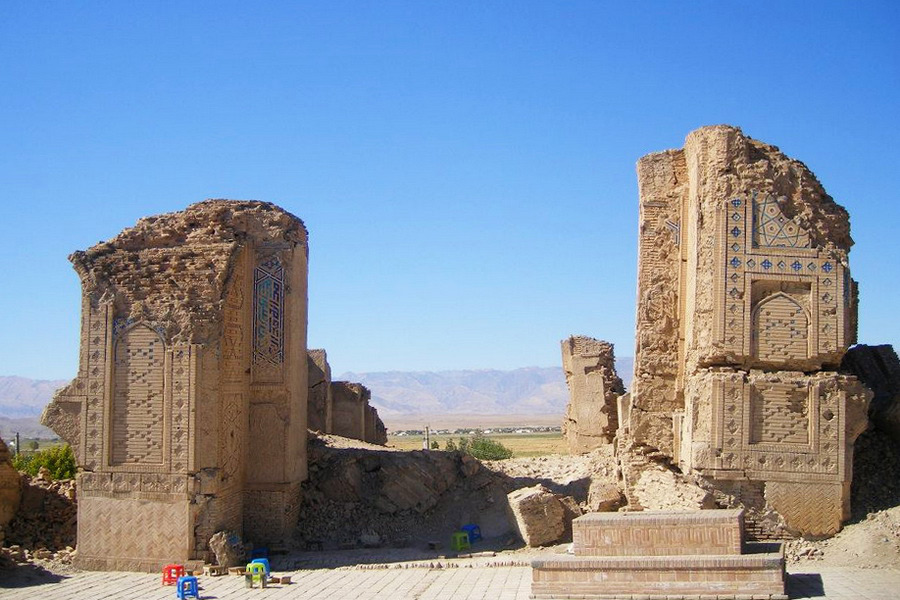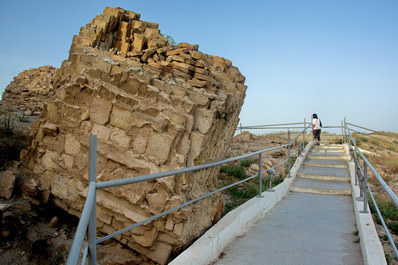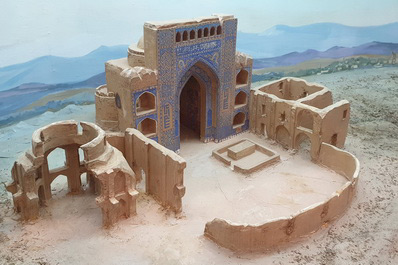Seyit Jamal ad-Din Mosque (Anau), near Ashgabat

Seyit Jamal ad-Din Mosque is one of the few medieval monuments near Ashgabat. Unfortunately, a powerful earthquake in 1948 destroyed much of it, leaving only the remnants of walls, parts of the portal, and the dome scattered around. Still, thousands of tourists visit these ruins every year.
Although the ruins don’t fully convey the mosque's former grandeur, early 20th-century historians and archaeologists studied the structure when it was still intact. We have a good understanding of how this masterpiece of Eastern medieval architecture looked.
The mosque stood on a hill near the ancient settlement of Anau, 12 kilometers from modern Ashgabat. It comprised a mosque, two additional buildings, and the ornate tomb of Seyit Jamal ad-Din. The mosque originally had two minarets, which didn’t survive into the 19th century, though their foundations were discovered during early explorations by Europeans. Constructed of burnt brick and adorned with majolica mosaics, its vibrant entrance portal featured two yellow dragons—an unusual and unique design for Central Asian Islamic architecture.
The mosque had many vaulted structures, with the central hall reaching a height of 11 meters, covered by a large elliptical dome. It had multiple exits and hujras (cells) along the sides at the basement level.
Built between 1446 and 1457 by order of Vizier Mohammed Hudaydot, the mosque was dedicated to his father, buried in front of it. Named the “House of Beauty”, it was part of the Khorasan region ruled by Abul-Qasim Babur, the great-grandson of Amir Timur. Unfortunately, Abul-Qasim Babur died in 1457, leaving the mosque unfinished.
Russian orientalist Zhukovsky first documented the mosque in 1896, with further studies in 1904, 1926, and 1937. In 1947, a year before the earthquake, a large archaeological expedition took place, resulting in numerous publications. However, no one has definitively explained why dragons were depicted on the entrance portal.
A local legend tells of a bell in Anau that, when rung, summoned help from the inhabitants. One day, a dragon rang the bell, signaling people towards the mountains where another dragon was suffering from goat horns stuck in its mouth. After removing the horns, the grateful dragons led the people to a treasure cave. Queen Jamal, who ruled the city, ordered the construction of a mosque with dragons depicted on it in gratitude.
Today, the Seyit Jamal ad-Din Mosque may seem unremarkable, with its scattered stone walls and mosaic fragments. However, in 2001, the remaining dragon images were extracted from the ruins and are now displayed at the Museum of Fine Arts in Ashgabat.




